After a cloudy start, it gradually brightened up through the morning and was then bright and mostly sunny, with the temperature topping out at 24C this afternoon. Our focus this morning was to be on catching up with some of our rarer summer visitors, and then maybe we would have some time to look for some of our other summer wildlife.
It was only a short drive over to Swanton Novers this morning. If was forecast to be sunny this morning but after a bright start it had clouded over, not ideal weather for raptors. We were possibly a bit early too so while we waited for the forecast to come good, we looked at some of the other birds in the Raptor Watchpoint car park. There were several Yellowhammers, with some smart males perched in the hedge and singing.
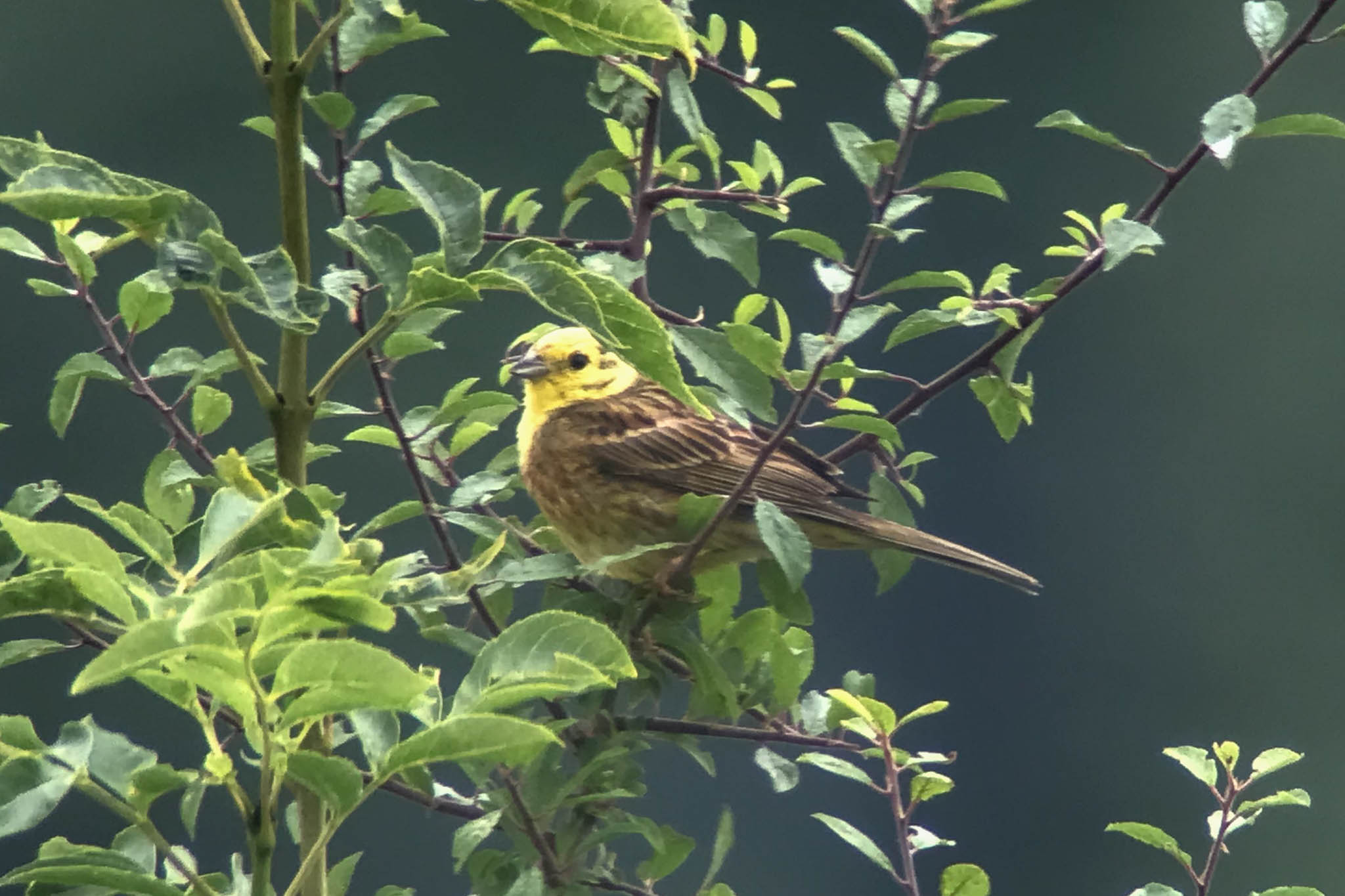
A Reed Bunting perched up briefly to sing in the blackthorn scrub at one point too. There were lots of Linnets, including a couple of red-breasted males, in and out of the hedges. One or two Common Whitethroats flicked in and out of the bushes and a Blackcap was calling from the corner behind us.
The cloud gradually started to break up from the north, and it began to warm up. The first Common Buzzard circled up in the distance over the wood, always a good start when looking for raptors. A Kestrel appeared over the trees too, flying towards us and then hovering over the field in front of the watchpoint.
We didn’t have to wait too long before a Honey Buzzard appeared out of the wood and we watched as it circled up over the field in front. It drifted away, over to the forestry plantation along one side, and flew up and down over the trees a couple of times. We had a great view of it here in the scope as it circled, a male. This was what we were hoping to see here this morning.
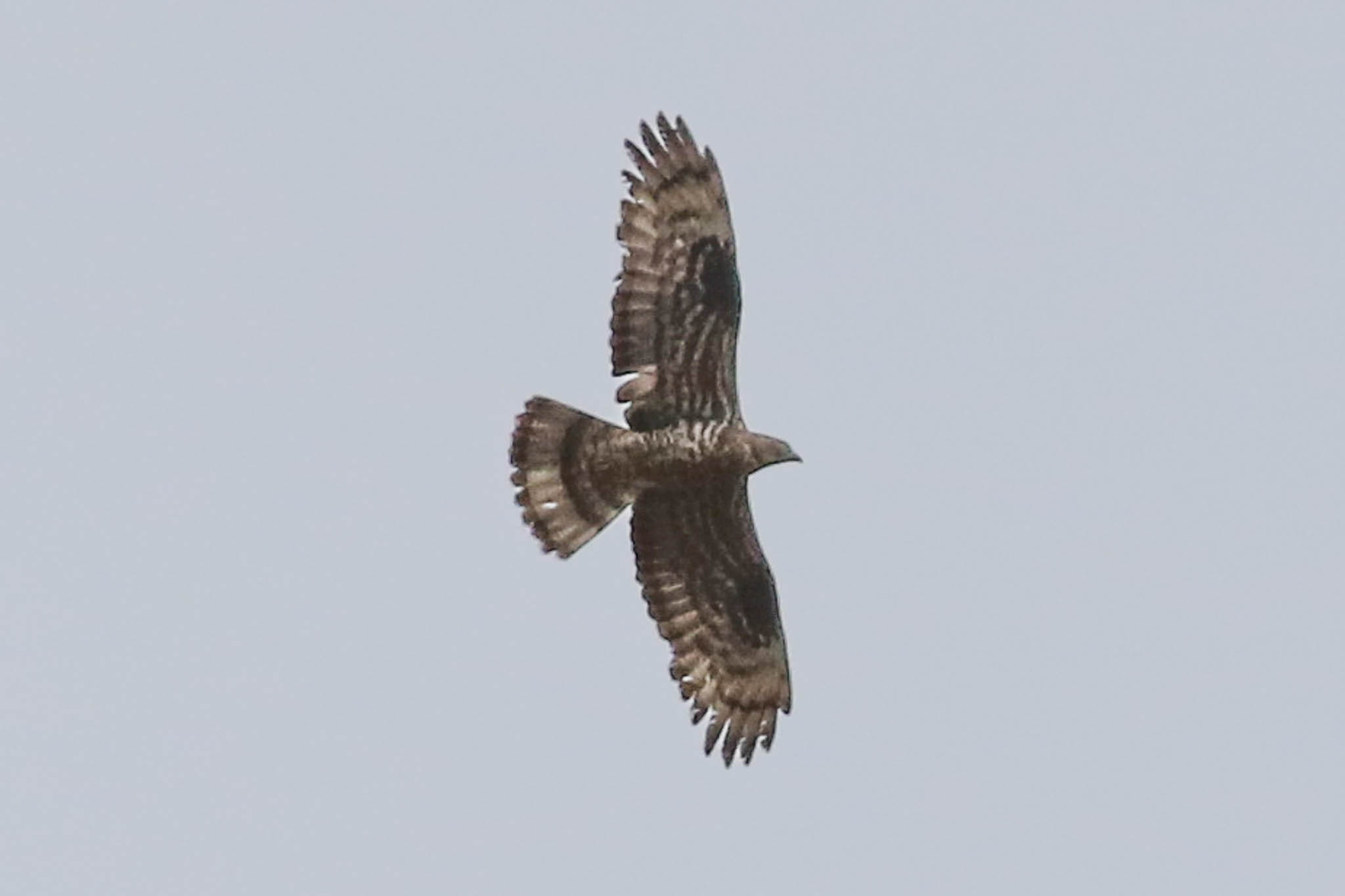
Even better, the male Honey Buzzard now started displaying – flying up in a gentle climb, stalling at the top and lifting its wings high above its back before quivering them very rapidly. Having lost height, it would then repeat the process, flying up and wing quivering again at the top, several times in succession. Great to watch.
Someone else who was watching shouted – and drew our attention to another Honey Buzzard coming in right behind us, directly over the watchpoint. A female this time, it started displaying too, wing quivering right above us. Wow!
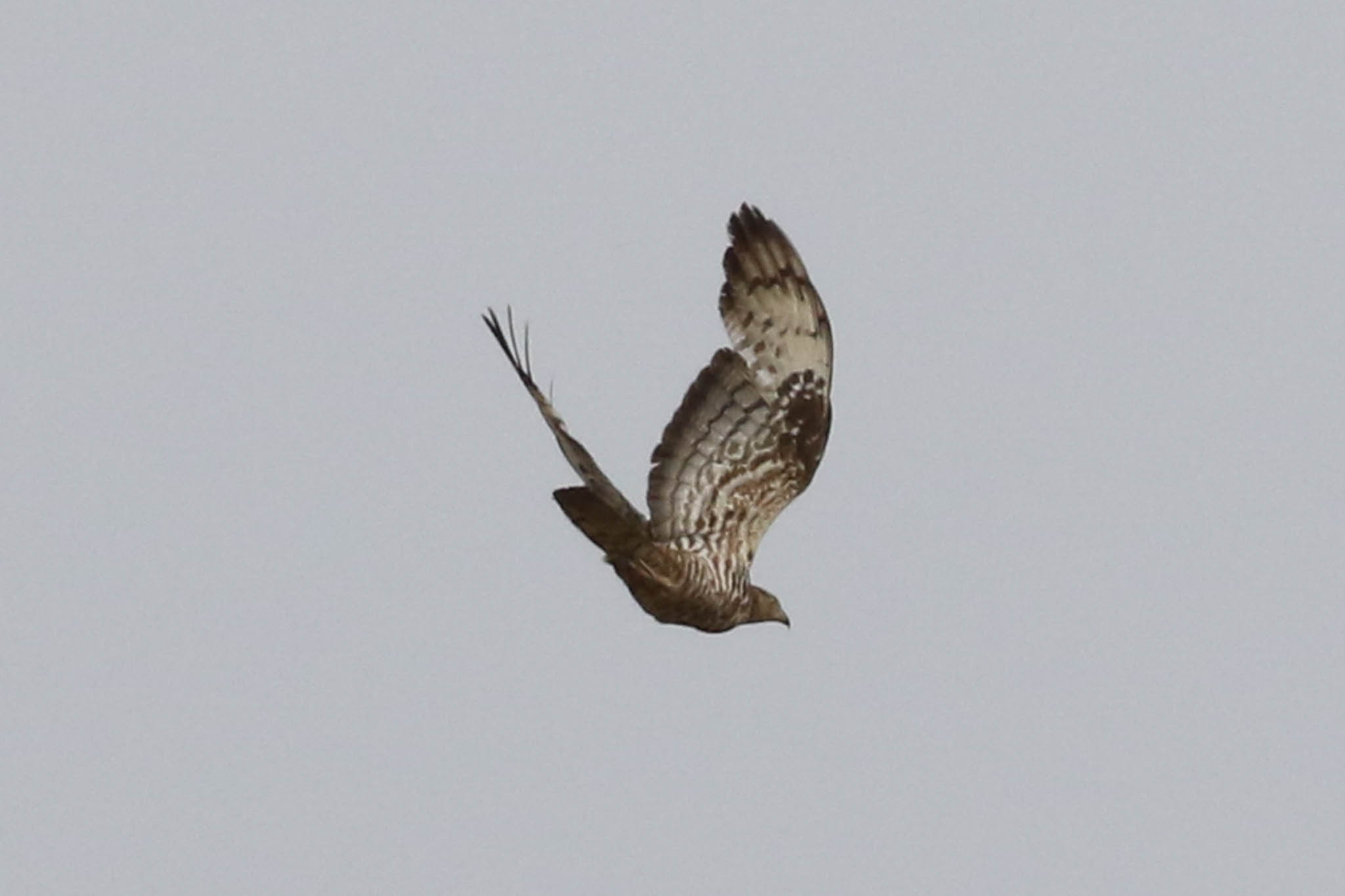
The two Honey Buzzards then circled together, drifting back over the watchpoint before gaining height, and then dropping back down towards the wood. When they disappeared into the trees, we decided it was a good moment for us to move on. Mission accomplished – and not too long to wait this morning.
Our next destination was over in NE Norfolk. We arrived in the RSPB car park at Trimingham to be told that the Bee-eaters had just returned from a feeding trip. They hadn’t, but we didn’t have to wait long before one of the locals picked up four of them coming back in over the trees to the south. Two flew in and landed on the wires, where we had a great view of them in the scopes.
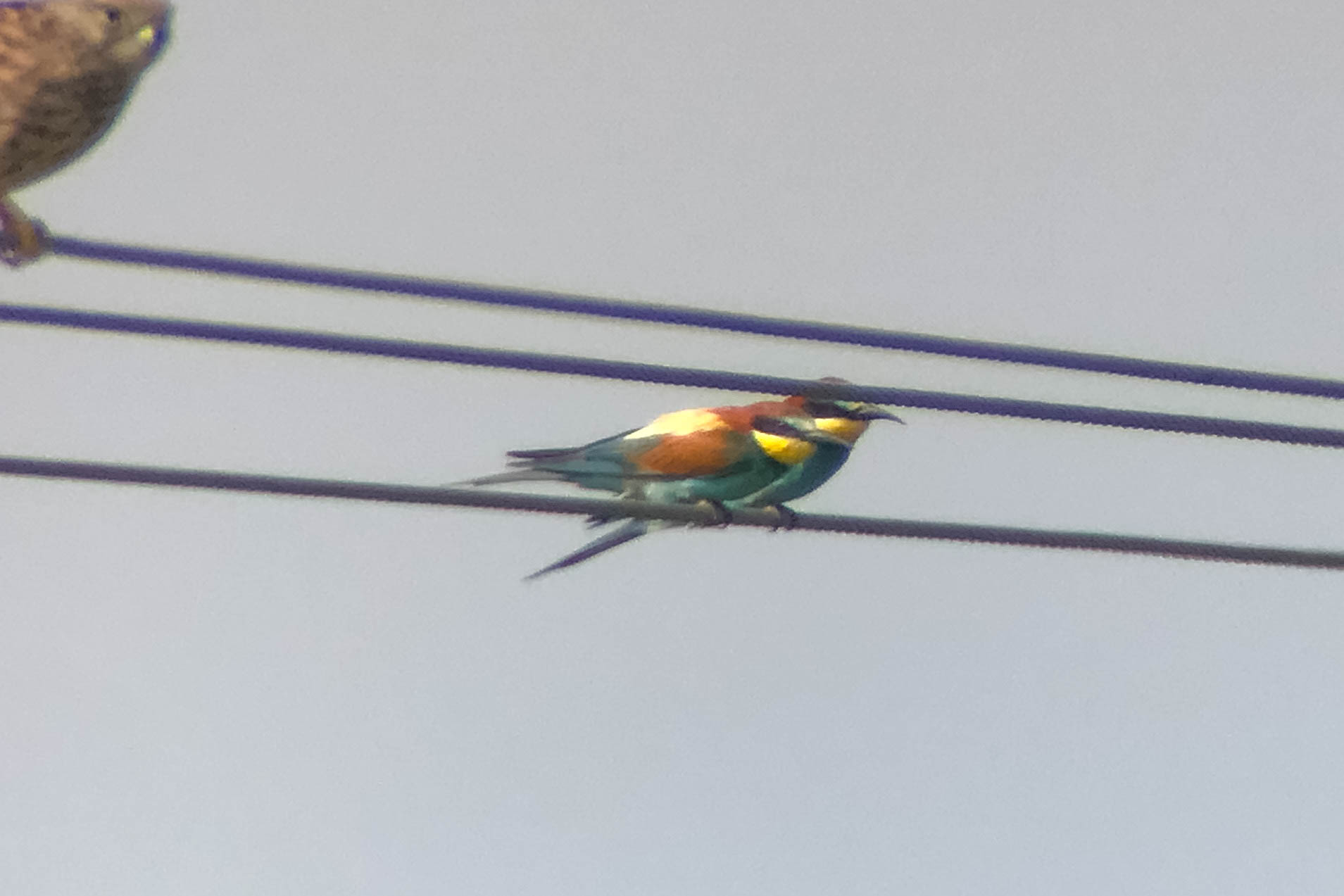
The Bee-eaters flew down into the quarry to the nest hole and one went in. Presumably it was change over time, and it was a different bird which flew out shortly after. They flew back up to the wires. More Bee-eaters appeared, and we had up to five together now. We watched them for a time, making occasional sallies to catch bees and other flying insects, taking them back to the wires to bash them into submission before eating them. Periodically, birds would fly round calling.
This is only the eighth time that Bee-eaters have attempted to nest in the UK, although with a warming climate it is a species we might expect to reach here more often. Formerly mainly a Mediterranean species, they have already expanded their range north through Europe. There have been up to eight birds seen here in the last few weeks and there are two pairs nesting – hopefully they will be successful.
There were other birds here too – a family of Kestrels, mostly perched on the wires too. A Red Kite drifted over and several Sand Martins flew in and out of the quarry, but the Bee-eaters were the main reason we had come here today.
After a while, the Bee-eaters took off again and flew round calling. Two flew back down into the quarry and we had great views of them circling below us, their bright colours dazzling in the bright sunshine. We watched as one went into one of the nest holes. When one came out again, that was the cue for the whole group to fly off again to feed.
That was the cue for us to move on too. We drove back up to Cley next, cutting across inland to avoid the traffic, arriving in perfect time for lunch. Looking out over the reserve while we sat at the picnic tables, there were several Marsh Harriers up, adult males and female hunting beyond and a juvenile hanging around the reedbed. At one point, the juvenile Marsh Harrier drifted over the scrape and flushed everything – as they gradually flew back in, we could see Lapwings, Black-tailed Godwits and a little group of Teal. A Spoonbill flew over and disappeared off west.
Checking at the Visitor Centre, there was not much reported on the reserve today, so we decided to try something else and headed back inland up to the heath. As we walked up from the car park, there were lots of Essex Skippers on the brambles, along with Meadow Browns and Gatekeepers. There were lots of Red Solider Beetles on the hogweed and a conopid fly, a Bee-grabber (Sicus ferrugineus) lurking on the ragwort, waiting to grab a bee to parasitise.
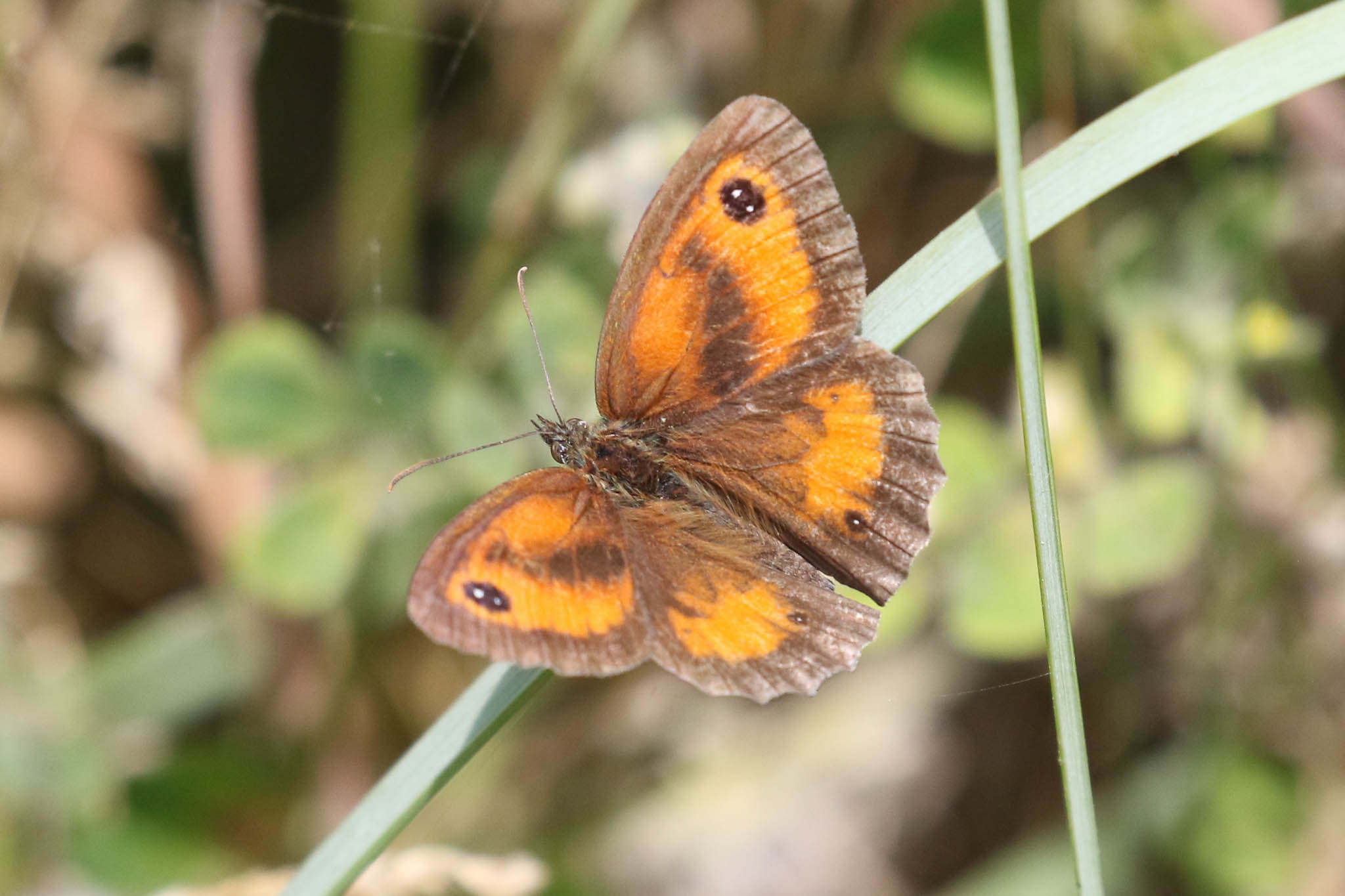
There has been a pair of Stonechats with several juveniles nearby, so we walked on further to check up on them. We quickly found them, the adult male plus three streaky juveniles – presumably the female is now incubating a second brood clutch.
The Stonechats are occasionally followed around by warblers, presumably as they are good lookouts for approaching danger. At first we found a Common Whitethroat feeding in the gorse near two of the juveniles. Then we noticed a juvenile Dartford Warbler low down in the heather nearby. Positioning ourselves, we had a good view of it on the edge of the vegetation as it picked round looking for food. We managed to follow it for a while, before it disappeared deeper in.
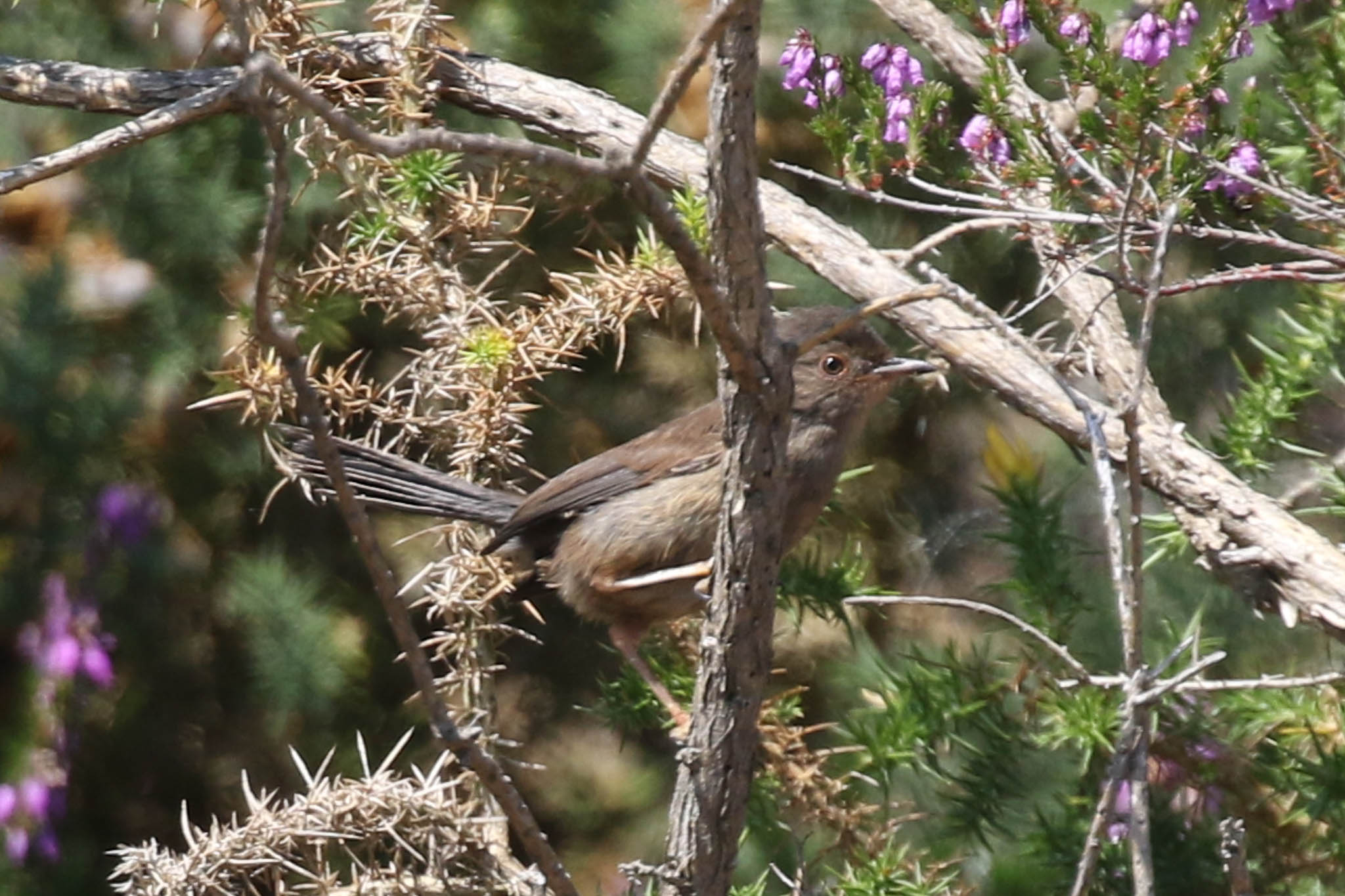
Eventually the Stonechats flew further back out of view. We walked round on the path to where they had gone. A smart male Linnet perched up on the gorse as we passed. We found the Stonechats again, further over, and the Whitethroat was still with them but despite watching for a few minutes there was no further sign of the Dartford Warbler. The Dartford Warbler was our main target here and we had found it much quicker than we had anticipated, particularly given that it was hot and typically a lull in the middle of afternoon. So we decided to try something else.
As we walked back down towards the car park, a small wasp on the path caught our attention. It was struggling to carry something, which we eventually managed to see was a shieldbug nymph. The wasp, sometimes known as the Shieldbug Stalker, more formerly as Astata boops, catches the shieldbug nymphs to put in its nest burrows for its young. This one was having a great deal of difficulty carrying off the one it had caught!
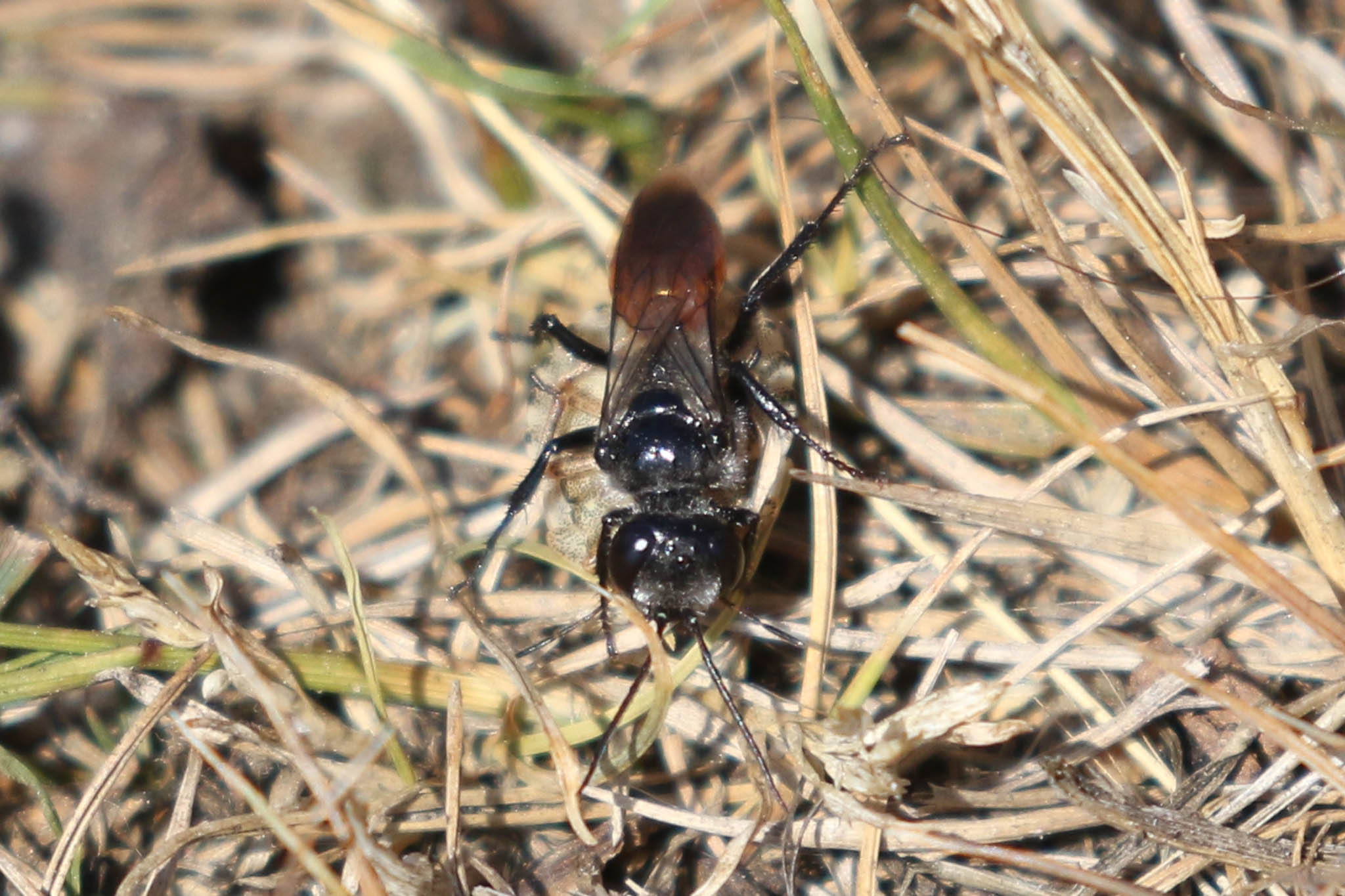
We drove over to Stonepit Heath next. As we walked in through the gate, there were lots of butterflies on the buddleia in the old car park, lots of Peacocks at first, and then several very smart Silver-washed Fritillaries which flew in and out to feed. A Small Skipper landed briefly.
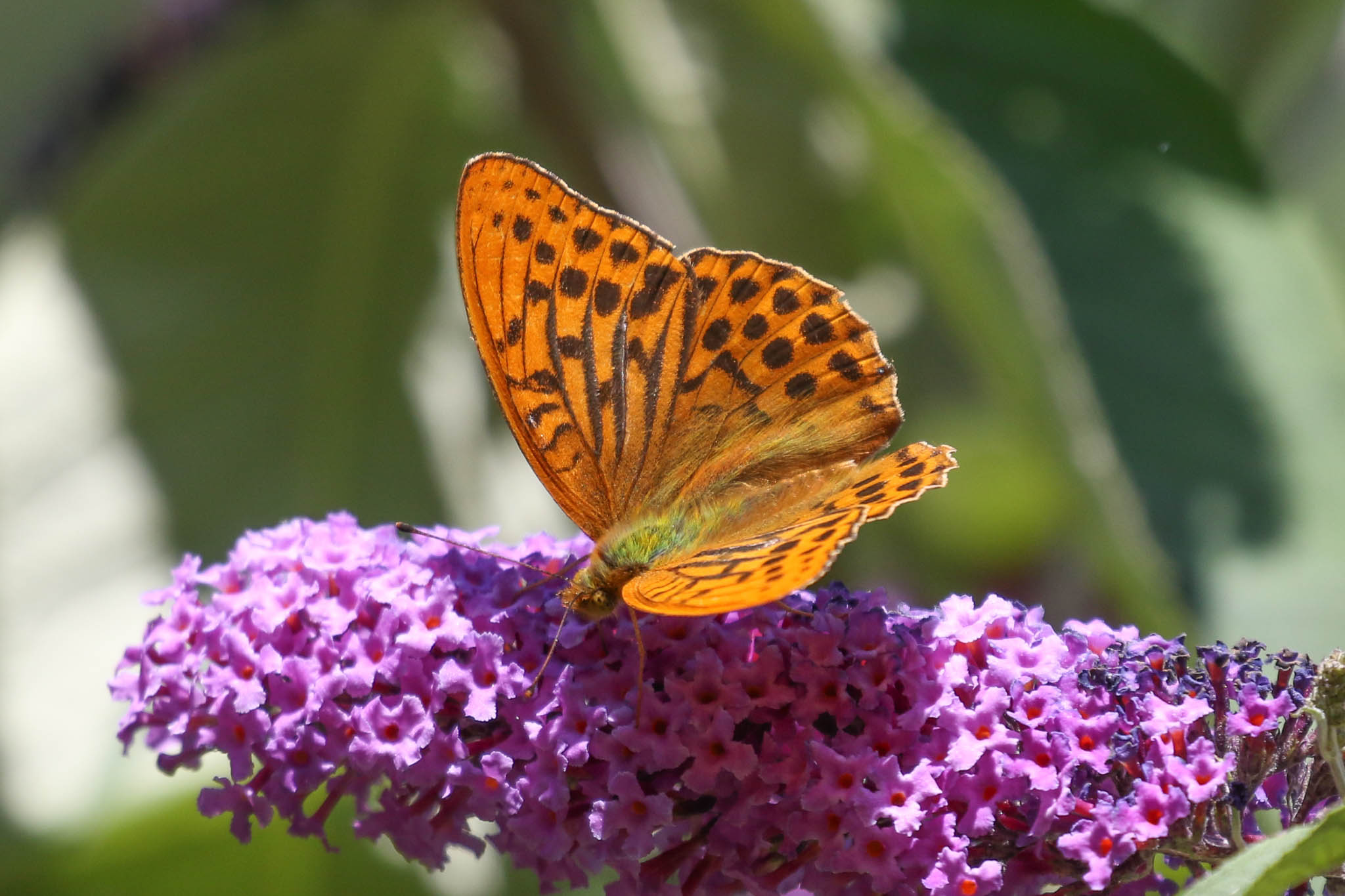
We made our way down through the kissing gate to check the brambles. We found a White Admiral here, which showed very well, although it was a bit worn. There were more Silver-washed Fritillaries here too and a couple of Purple Hairstreaks around the top of the small oaks, but they were showing no signs of coming down to feed.
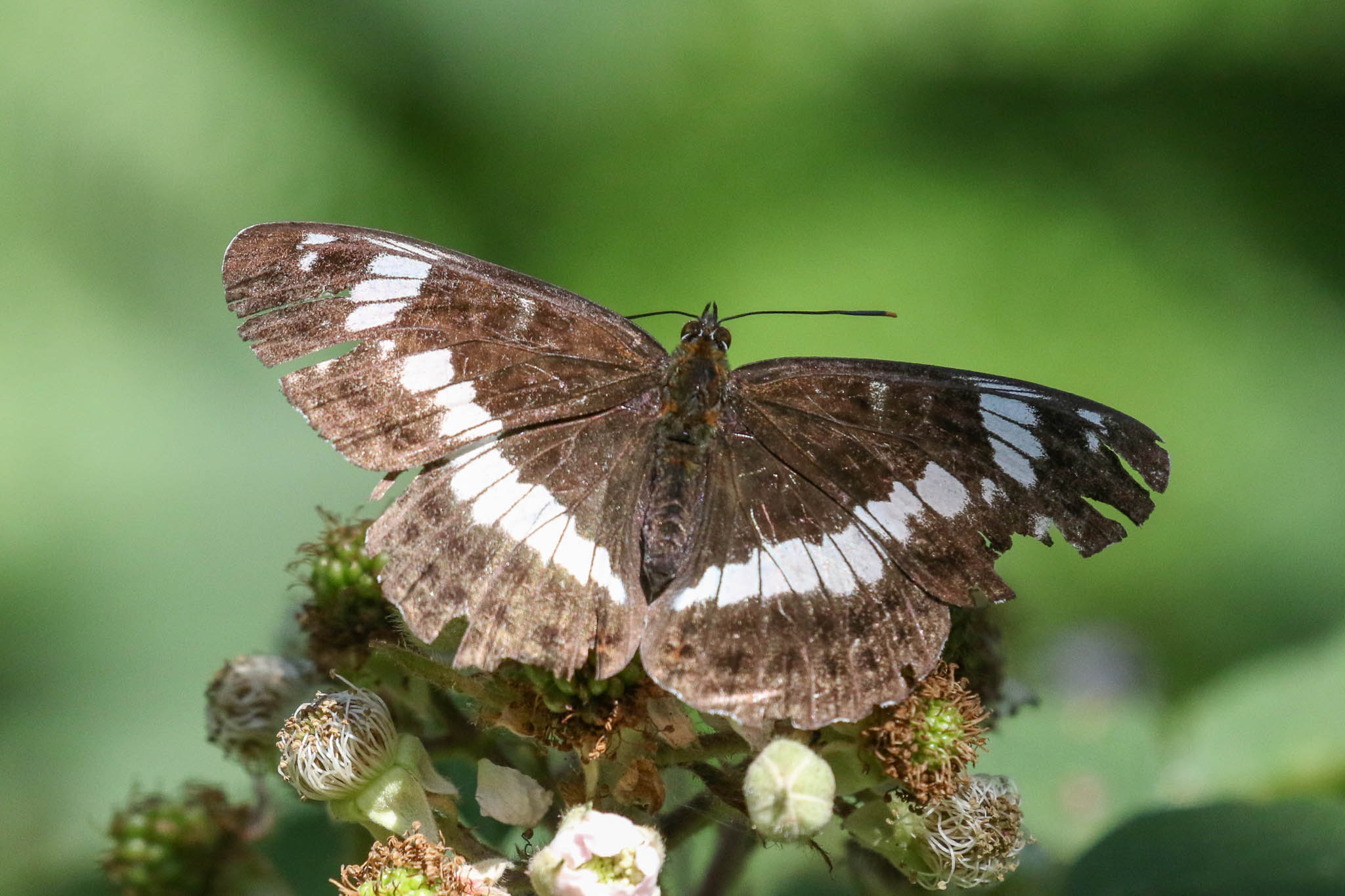
We walked on through the trees to another patch of brambles where there were more butterflies feeding. A very large and striking red and yellow hoverfly was doing a very good impression of a hornet – a Hornet Hoverfly, Volucella zonaria.
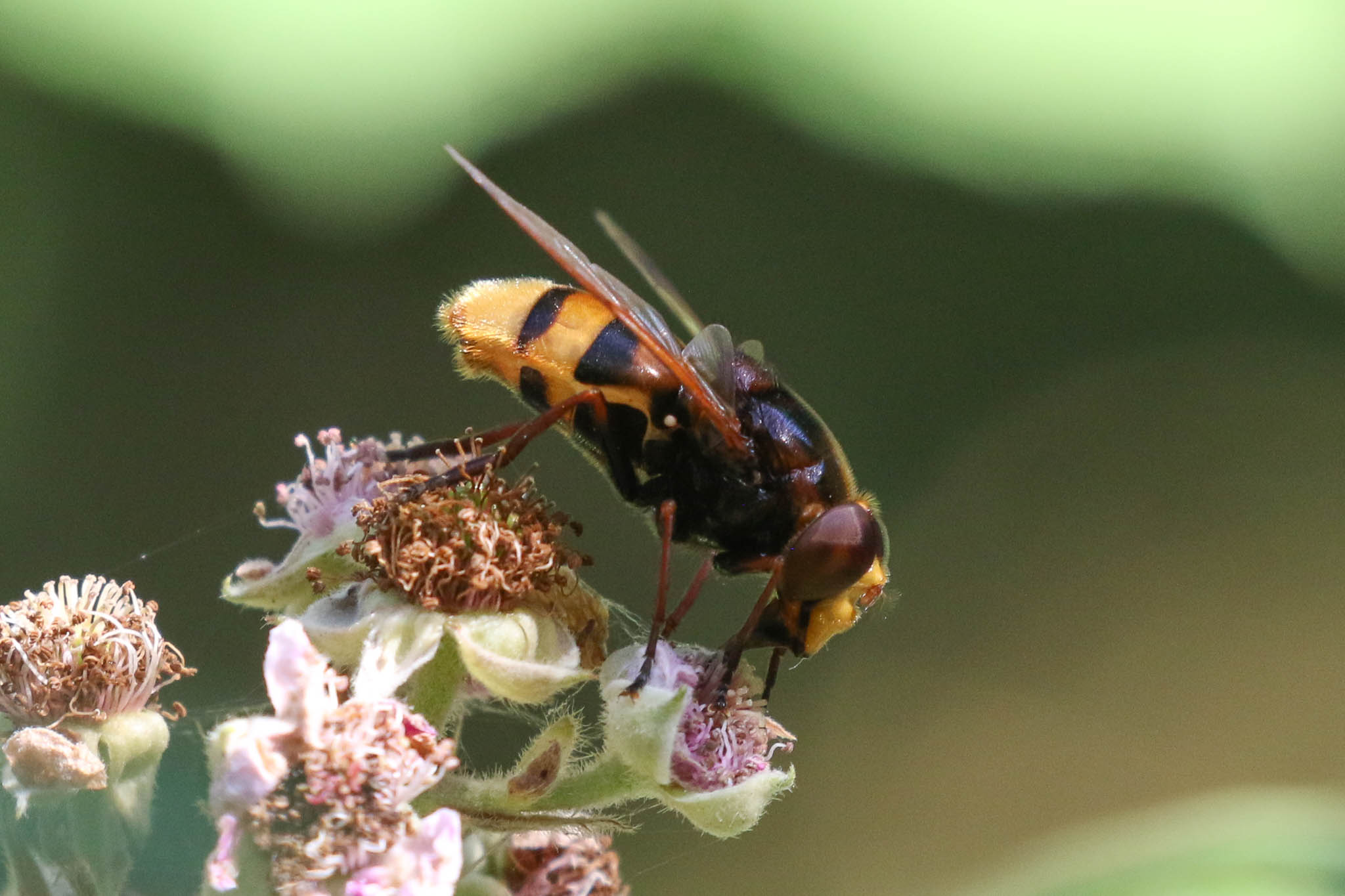
There was no sign of any White-letter Hairstreaks on the brambles but someone else who had joined us to look found two up in the top of a very small elm nearby. We could see one silhouetted through a leaf, and another flew round over the top. A Nuthatch was calling in the trees.
With an excellent selection of butterflies, and other insects, seen in just a brief visit, we made our way back out to the minibus. As we got out onto the road, we could hear a flock of Long-tailed Tits calling and looked over to see several crossing the road just beyond the minibus. We stood and looked and found a Marsh Tit with them. We heard it call first, then it came back out onto the front edge of the hedge, and we watched it picking caterpillars from the leaves of a small briar. A couple of Chiffchaffs flicked across with the tits too.
We needed to finish in good time today and it was too hot to walk far now, so we drove back down to Cley for a quick look at the sea. It looked pretty quiet at first, apart from lots of people swimming, but as we stood and scanned a succession of Sandwich Terns flew past, a trickle of Gannets passed by further out and an adult Kittiwake flew east close in. A large Grey Seal surfaced just offshore, looked at the people on the beach for a minute or so, then swam off west.
Then it was time to head back, to have a chance to catch up and get something to eat.
Nightjar Evening
We met again in the evening, after a rest and something to eat. It was still a bit early for Nightjars, so we headed down towards the coast first.
On our way, we stopped to look for our regular Little Owl. It was in its usual place on the end of the barn roof tonight. Once again, using the minibus as a hide we repositioned a couple of times to let everyone get a good look at it. Most of this complex of barns has already been stripped for redevelopment – it will probably not be around much longer.
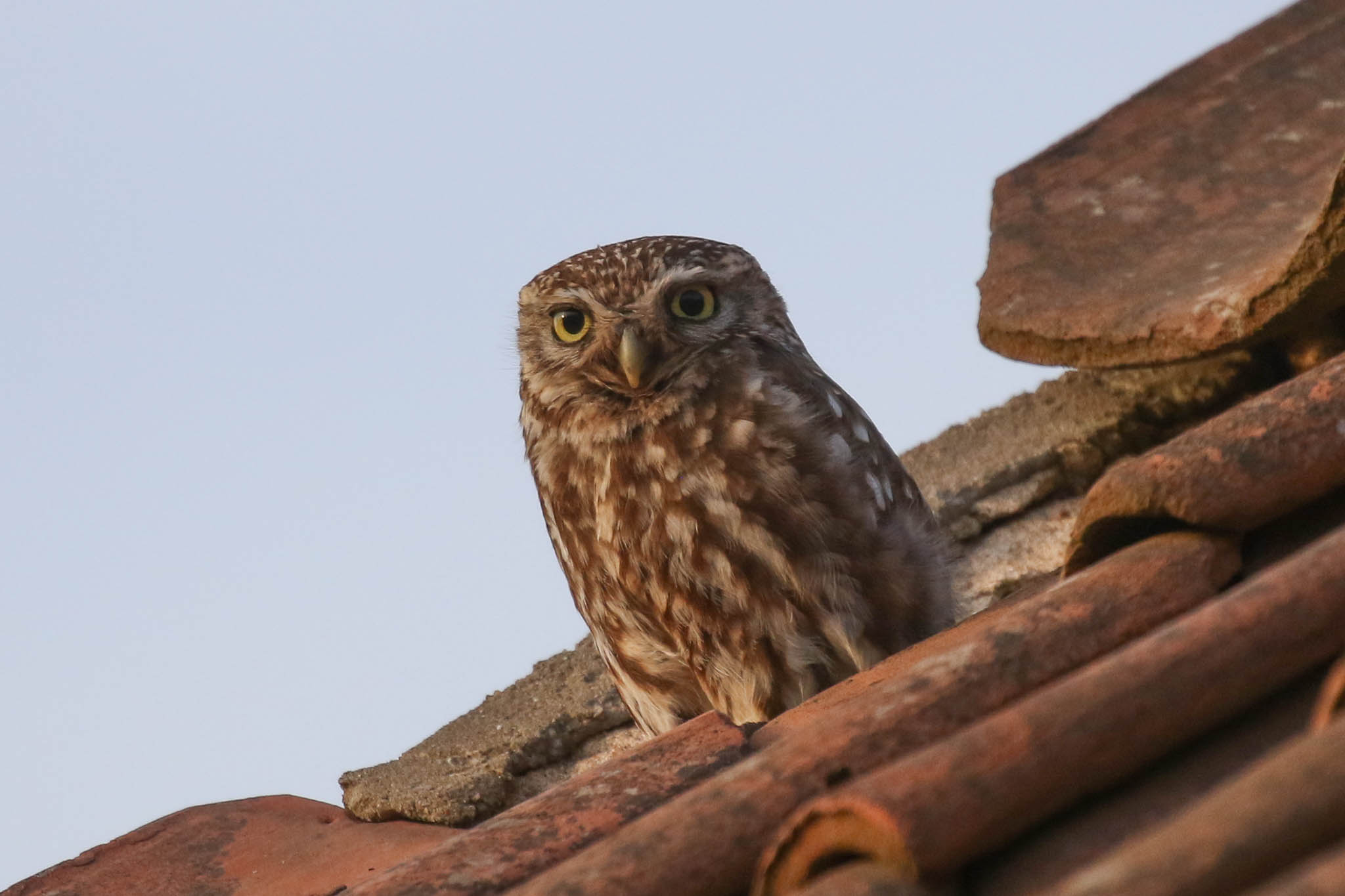
We had a quick drive round to see if we could find any Barn Owls next, stopping again where we had seen one hunting the other night, but there was no sign of any tonight. A Spoonbill flew over the grazing marshes and lots of Swifts and Swallows were hawking around in the evening sky. When the hirundines all started alarm calling, we looked over to see a Hobby zoom into them. It didn’t catch anything and disappeared off west as quickly as it had appeared. We didn’t have much time to wait though – as we needed to get up onto the heath in good time.
Out on the heath, we didn’t have to wait too long before we heard the first Nightjar churring from the trees behind us. It was quickly followed by a second which churred from out in middle. When the second Nightjar called, we looked over to see flying across over the heather, and had a great view of it as it broke the skyline, a male flashing white in wings and tail.
It flew towards where the first Nightjar had been churring and disappeared into the trees. Then we heard more calling, and could see the two of them chasing through the trees. The first then landed on a branch, just long enough to get the scope on it, before it was off again.
As the light started to fade, the churring activity increased – we could hear at least three different male Nightjars now, from where we were standing. From time to time, one would fly round, hard to see low down against the heather and gorse, but great views when it broke the skyline. At one point, one came hawking for insects right over our heads!
When a male Nightjar flew across in front of us, it landed in the top of a young pine tree not far out. We got it in the scope now and had a great view, balanced on the pine, churring.

We stood and listened for a while, taking it all in. What a great way to spend a summer’s evening, out on the heath listening to Nightjars churring all around. Heaven! It was getting harder to see the birds flying round now so we decided to call it a night. We had another busy day ahead of us tomorrow.
















